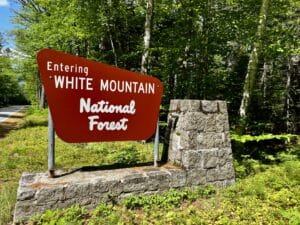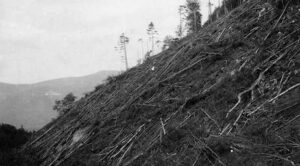 “Trump Administration Announces Atrocious Plan to Destroy America’s Largest Park Landscape“
“Trump Administration Announces Atrocious Plan to Destroy America’s Largest Park Landscape“
If you have ever visited or recreated in a National Park or National Forest, the recent headlines showcasing the Trump administration’s plans for them are frightening. Public lands should stay in public hands.
Other headlines shout “Trump Sacrifices Alaska Wilderness to Help AI Companies;” “Trump Plans To Log Ohio’s Only National Forest;” and there are many more.
The Senate and the House of Representatives control public lands today.
Back in July, there was enough bipartisan backlash that Utah Senator Mike Lee’s plan to sell hundreds of thousands of acres of public land across Western states (in his much reduced Senate Energy & Natural Resources Committee’s budget reconciliation bill) was axed from the Senate version of the Republican tax and spending bill.
However, it is obvious that the United States’ public lands are still being coveted by the real estate, mining, drilling, and logging industries. And, it appears that the Trump administration, which continues to cut parks and forests’ funding, only sees their resources as potential money makers, not for the recreation opportunities or the wildlife preserves they provide.
The Guardian reported on June 24, “The Trump administration will rescind protections that prevent logging on nearly a third of national forest lands, including the largest old growth forest in the country… The interior secretary, Doug Burgum, spoke of a new ‘era of abundance’ on public lands, describing Donald Trump’s efforts to extract more natural resources for domestic manufacturing.”
Those of us who live in the East have been there before.

Clear-cutting has disastrous results
I used to work for a weekly newspaper, the Mountain Ear in North Conway, New Hampshire, a community right next to the White Mountain National Forest. Reporter Rob Burbank wrote in the paper way back in 1986 about what was then the 75th anniversary of the beginnings of the ‘People’s Forest’–The Weeks Act of 1911: “The White Mountain National Forest may never have been if not for the vision of a Massachusetts Congressman named John Weeks. In 1909, the New Hampshire native sponsored legislation leading to the creation of the national forest two years later.”
Burbank quoted former New Hampshire Governor (from Jan. 6, 1949-Jan. 1, 1953) Sherman Adams about the significance of the Weeks Act: “It was a coalescence of the public interest in natural resource protection and management, the public concern over forest depletion, and the public appreciation for the unique array of goods and services which emanate from the forest.”

The White Mountains before the Weeks Act
The U.S. Department of Agriculture describes the result of the Weeks Act.
“The Act’s natural resource conservation success has been profound: it designated 52 national forests in 26 Eastern states and mandated conservation ethics on some 20 million acres of national forests and grasslands across 41 states and Puerto Rico. Today, 80% of the 155 national forests are comprised of lands acquired through the Weeks Act, sustainably managed for a wide variety of conservation purposes.”
While the East had John Weeks, the West had Teddy Roosevelt, who the National Park Service website noted that after he became president in 1901 “used his authority to protect wildlife and public lands by creating the United States Forest Service (USFS) and establishing 150 national forests, 51 federal bird reserves, 4 national game preserves, 5 national parks, and 18 national monuments… [and] protected approximately 230 million acres of public land.”
 What do we have now? Well, we have Republicans in the House who had proposed, with President Trump’s approval, the selling off of more than 250 million acres. More than what Teddy Roosevelt protected. These would have included hiking trails, ski resorts, wilderness study areas, national monuments, and critical wildlife migration corridors.
What do we have now? Well, we have Republicans in the House who had proposed, with President Trump’s approval, the selling off of more than 250 million acres. More than what Teddy Roosevelt protected. These would have included hiking trails, ski resorts, wilderness study areas, national monuments, and critical wildlife migration corridors.
This administration has lumber executives running the industry, and those who want to sell off public lands are chairmen of important committees.
We also have Tom Schultz, a former executive at a lumber industry company, leading the U.S. Forest Service. And then there’s Utah Senator Mike Lee, who chairs the Senate Energy and Natural Resources Committee and wanted to sell off public lands supposedly “to expand housing, support local development…” even though critics said the sales would harm wildlife and recreation access.
Those in charge do not seem to understand that protected areas like national parks can’t function in isolation. As Kylie Mohr quoted Jenny Fitzgerald, executive director of the Jackson Hole Conservation Alliance of Grand Teton and Yellowstone national parks in SF Gate, “…wildlife move in and out of the park for habitat and food, crisscrossing between the national park and the public lands that surround it… Selling these lands for housing or other development would unwind decades of conservation at a time that we are already environmentally taxed. I fear there would be no recovery from this.”
We need lovers of nature in government positions
Maybe we need someone in those government positions who actually loves and recreates in the outdoors (besides playing golf). Not people who only see our National Forests and Parks as potential real estate or for mining, drilling, or logging.
Whether or not the House Republicans add selling federal lands back into the so-called Big Beautiful Bill, it’s important to pay attention to what is happening in Washington as the Trump administration definitely has designs on our public lands.

The public should speak up
I write this to remind people that speaking up by contacting your local representative makes a difference. Let’s all work to preserve for ourselves and for generations to come the wildlife and natural wonders that John Weeks and Teddy Roosevelt helped save more than a century ago.
Click here to contact your representatives. And also consider supporting your favorite environmental organization, as they are working hard to preserve “ordinary Americans’ access to outdoor recreation” that many of us enjoy.
READ ALSO:
20 crucial steps for travelers to take to secure their home while on vacation
How to fight back against the assault on passenger rights

After several decades working in a variety of jobs as a newspaper writer, event publicist, communications specialist, and marketing director, Karen Cummings is now “retired” and working on Travelers United’s social media and newsletters in addition to occasionally contributing a travel-related article to TU’s blog. She lives close to her family in Maine, and travels as often as she can.
